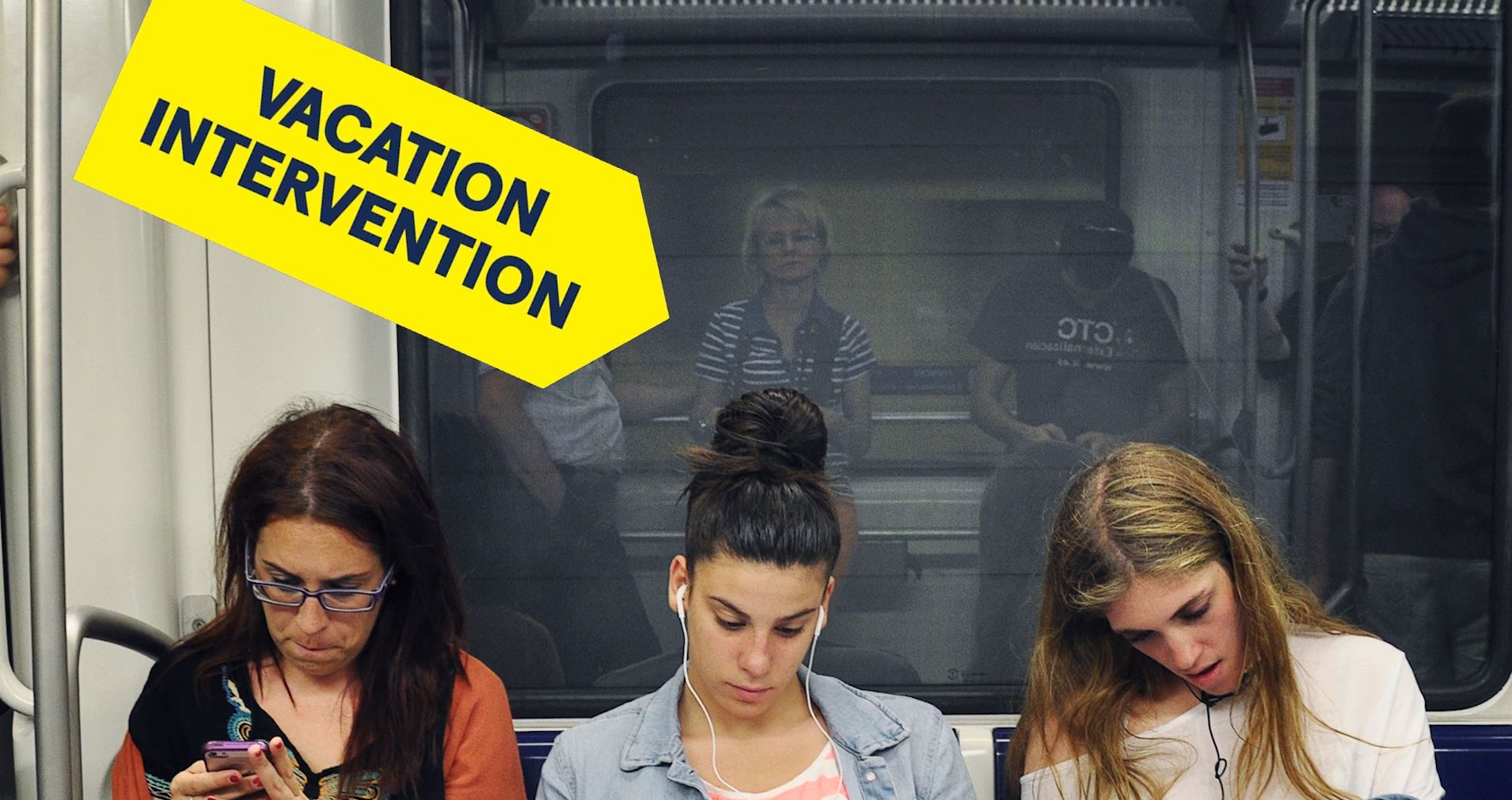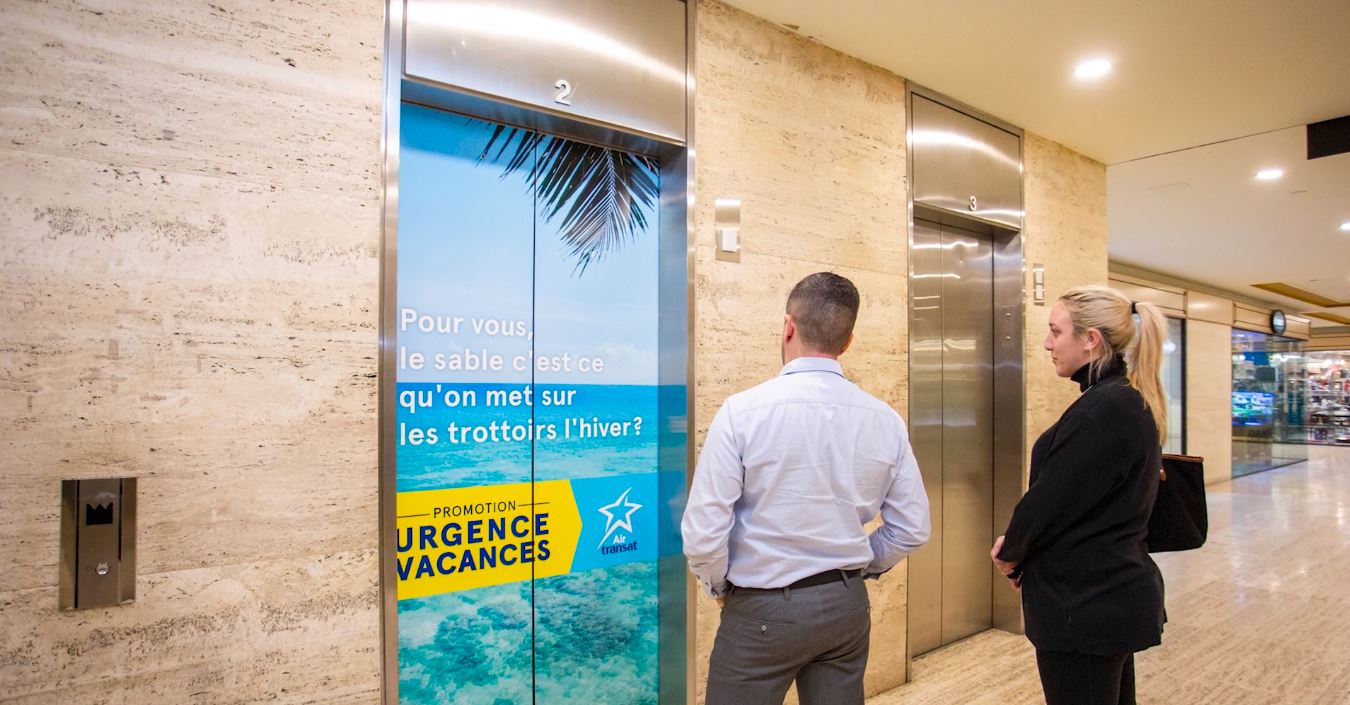2021 Winner



SilverBest in Travel and Tourism
Air Transat
"Vacation Intervention"
Sid Lee Media
"Vacation Intervention"
Sid Lee Media
When temperatures go down, Canadians book their yearly winter escape in the sun destinations. Air Transat, Canada’s number one leisure airline, competes with an extremely fierce competition during that time of year. To win the ticket sale battle, Air Transat needed to differentiate its brand, and expand its customer base by attracting new travelers to the sun destination travel category.
Over the years, competitors in the leisure airline category in Canada all showed the same advertising behaviors when supporting sun destinations, leading to undifferentiated campaigns and a price war.
How do you explain this sea of advertising sameness? Well, for years, all players of the category scrutinized the travel habits of Canadians in search for the perfect insight. In 2020, Air Transat decided to explore a new territory. Instead of analyzing how Canadians travel, it researched what Canadians escaped from: work! They commissioned an exclusive market research on Canadian’s work habits, and found a shocking insight. Every year, millions of vacation days are left unused in Canada. As a matter of fact, the research showed that among Canadians who have vacation days, 40% do not take all of them. Needless to say, a consumer who doesn’t take his vacation days is a lost business opportunity
for Air Transat.
Air Transat then decided to become the protector of Canadians’ well-deserved time-off by reminding them that vacations are a right and not a privilege. It was time for a Vacation Intervention.
Every good intervention starts by acknowledging that you have a problem. Therefore, the first phase of the campaign was to find the 40% of Canadians who are in need of a vacation. And then, make these tired Canadians realize that vacations are too important to leave behind.
As the seasonal blues are a catalyst to increase the vacation need, they increased their media spend in the market as the days grew shorter and the sunshine went missing. They used the Blue Monday, the third Monday of January and the most depressing day of the year, to boost their campaign and promote their vacation interventions.
They launched their intervention campaign with a content video series. In these short funny interviews, comedians sought out the most “vacation deprived” people they could find. Those videos, combined with several pictures of tired workers, were promoted on social media at specific times of day, when workers were overwhelmed and tired. The campaign was playful, but it has a serious message at heart: everybody deserves a vacation.
They broadcast radio ads during traffic peak hours in order to stage interventions when worn-out workers were stuck in traffic, on their way to work. Contextual out-of-home messages reached workaholics on major highways early in the morning and very late in the evening. They also hijacked building elevators to remind consumers of the importance of taking time off. These 360 lobby wraps were a first seen in-market and only possible thanks to tons of cold calls to building owners!
They also deployed a unique newspaper strategy, in the leisure and entertainment sections. Their contextual ads asked Canadians if this reading time was their only time-off of the day.
Finally, they empowered consumers to do interventions themselves as they launched a contest where Canadians were invited to nominate a deserving friend, family member or co-worker who hasn’t been on a holiday in a long time.
All those tactics enabled them to create custom audiences in order to retarget exhausted workers on social, display and SEM with a customized and unique sales offer.
Rather than talking to the Canadians who usually take their vacation, like their competitors do aggressively, they choose to speak directly to the 40% of workers who don’t take their vacation. As January is a highly competitive month in the airline industry, they were cleverer than their competitors by capturing all their attention and becoming their vacation savior.
Air Transat’s objectives were to differentiate its brand and expand its customer base by attracting new travelers to the sun destination travel category. Thanks to a powerful insight, Air Transat created a unique and truly differentiating campaign. The campaign generated an impressive brand lift of 8.5 points in Montreal and 11.6 points in Toronto and set Air Transat in a territory unexploited by its competitors.
They are confident they reached the right 40% of the population as 49% of passengers who booked during the campaign are new customers, a feat Air Transat had never accomplished before! They convinced 47 000 tired workers, who would have not otherwise taken all their vacations, to treat themselves with a trip to a sun destination. (These results are jaw dropping considering that Air Transat covers a market of only 20M people!)
Over the years, competitors in the leisure airline category in Canada all showed the same advertising behaviors when supporting sun destinations, leading to undifferentiated campaigns and a price war.
How do you explain this sea of advertising sameness? Well, for years, all players of the category scrutinized the travel habits of Canadians in search for the perfect insight. In 2020, Air Transat decided to explore a new territory. Instead of analyzing how Canadians travel, it researched what Canadians escaped from: work! They commissioned an exclusive market research on Canadian’s work habits, and found a shocking insight. Every year, millions of vacation days are left unused in Canada. As a matter of fact, the research showed that among Canadians who have vacation days, 40% do not take all of them. Needless to say, a consumer who doesn’t take his vacation days is a lost business opportunity
for Air Transat.
Air Transat then decided to become the protector of Canadians’ well-deserved time-off by reminding them that vacations are a right and not a privilege. It was time for a Vacation Intervention.
Every good intervention starts by acknowledging that you have a problem. Therefore, the first phase of the campaign was to find the 40% of Canadians who are in need of a vacation. And then, make these tired Canadians realize that vacations are too important to leave behind.
As the seasonal blues are a catalyst to increase the vacation need, they increased their media spend in the market as the days grew shorter and the sunshine went missing. They used the Blue Monday, the third Monday of January and the most depressing day of the year, to boost their campaign and promote their vacation interventions.
They launched their intervention campaign with a content video series. In these short funny interviews, comedians sought out the most “vacation deprived” people they could find. Those videos, combined with several pictures of tired workers, were promoted on social media at specific times of day, when workers were overwhelmed and tired. The campaign was playful, but it has a serious message at heart: everybody deserves a vacation.
They broadcast radio ads during traffic peak hours in order to stage interventions when worn-out workers were stuck in traffic, on their way to work. Contextual out-of-home messages reached workaholics on major highways early in the morning and very late in the evening. They also hijacked building elevators to remind consumers of the importance of taking time off. These 360 lobby wraps were a first seen in-market and only possible thanks to tons of cold calls to building owners!
They also deployed a unique newspaper strategy, in the leisure and entertainment sections. Their contextual ads asked Canadians if this reading time was their only time-off of the day.
Finally, they empowered consumers to do interventions themselves as they launched a contest where Canadians were invited to nominate a deserving friend, family member or co-worker who hasn’t been on a holiday in a long time.
All those tactics enabled them to create custom audiences in order to retarget exhausted workers on social, display and SEM with a customized and unique sales offer.
Rather than talking to the Canadians who usually take their vacation, like their competitors do aggressively, they choose to speak directly to the 40% of workers who don’t take their vacation. As January is a highly competitive month in the airline industry, they were cleverer than their competitors by capturing all their attention and becoming their vacation savior.
Air Transat’s objectives were to differentiate its brand and expand its customer base by attracting new travelers to the sun destination travel category. Thanks to a powerful insight, Air Transat created a unique and truly differentiating campaign. The campaign generated an impressive brand lift of 8.5 points in Montreal and 11.6 points in Toronto and set Air Transat in a territory unexploited by its competitors.
They are confident they reached the right 40% of the population as 49% of passengers who booked during the campaign are new customers, a feat Air Transat had never accomplished before! They convinced 47 000 tired workers, who would have not otherwise taken all their vacations, to treat themselves with a trip to a sun destination. (These results are jaw dropping considering that Air Transat covers a market of only 20M people!)
Credits
Sid Lee MediaAir Transat
Sid Lee
